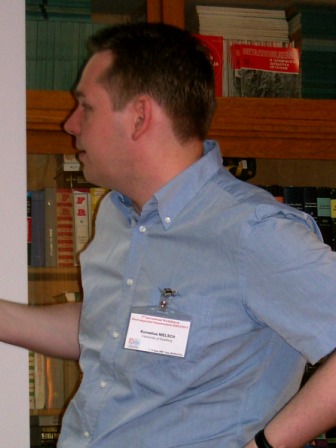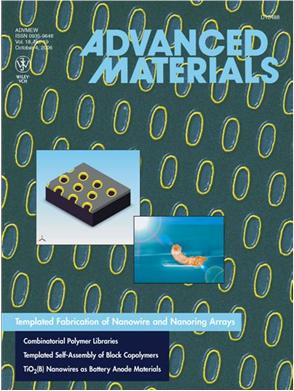|
|
Multifunctional nanowires based on aluminum oxide membranes and other template systems
Kornelius Nielsch
Institute of Applied Physics, University of Hamburg,
Jungiustrasse 11, 20355 Hamburg, Germamy
E-mail: Kornelius.Nielsch@physik.uni-hamburg.de
|

|
Nanomagnet arrays have recently attracted scientific interest due to their potential application as
patterned perpendicular magnetic storage media. Self-ordered porous alumina is a suitable template, in
order to obtain magnetic columns with larger aspect ratios (h/DP > 10). Currently, highly-ordered magnetic
nanowire arrays exhibit a 2D-polycrystalline arrangement with a dispersity deltaDP/DP ~ 8%. The fabrication of
Ni nanowire arrays based on imprint lithography will be presented, which show a perfect hexagonal arrangement
on a cm2-scale and deltaDP/DP ~ 2%. Additionally, we have analysed experimentally the influence of the arrangement
degree of the Ni nanowire arrays on the magnetic properties. The small deviation of the nanowire diameter
allows for the first time, detailed Brillouin light scattering studies on nickel nanowires. The Brillouin
data on spin waves in the nickel nanowires reveal strong quantization effects on their bulk magnetic properties.
Additionally, we will report on a novel approach on the fabrication of ferromagnetic nanotubes. The surfaces
of the alumina membranes are wetted with a polystyrene layer containing a metallo-organic precursor. Decomposition
of the precursor leads to the formation of thin-walled magnetic tubes with diameters of 160 - 550 nm and wall
thicknesses of a few nm. Finally, a short review about the development of porous alumina as a template system
by means of hard anodisation will be given and further applications based on porous alumina and other template
systems will be shown, e.g. gold nanotube membranes, magnetic nanoring arrays and thermoelectric nanowires.

Ran Ji et al, Adv. Mater 18, 2593 (2006).
|
|